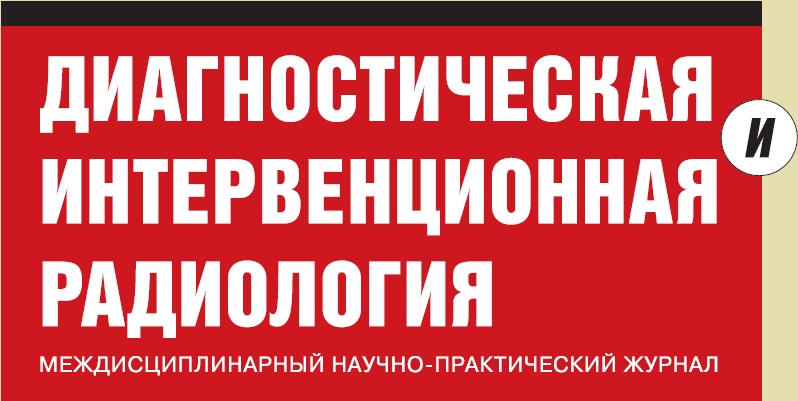Аннотация: В 2007 году 19 пациентам мужского пола с односторонними симптомными стенозами внутренней сонной артерии выполнена операция стентирования с использованием системы защиты от дистальной эмболии Mo.Ma (Invatec, Италия). Ангиографический успех вмешательства достигнут при всех операциях (100%). Средняя продолжительность стентирования - 53,7±19,9 минуты, а среднее время окклюзии сонной артерии -13±3 минуты. Неврологические осложнения были представлены транзиторной ишемией у 2 больных. Положительный клинический результат достигнут у всех пациентов. Первый клинический опыт демонстрирует, что операция каротидного стентирования с защитой от дистальной эмболии с использованием системы Mo.Ma выполнима и безопасна. Многообещающая концепция проксимальной окклюзии может быть высокоэффективна в профилактике эмболии в сосуды головного мозга во время операции каротидного стентирования.
Список литературы 1. Brown M., Rogers J., Bland J. et al.Endovascular versus surgical treatment inpatients with carotid stenosis in the Carotidand Vertebral Artery Transluminal Angioplasty Study (CAVATAS): a randomised trial.The Lancet. 2001; 357: 1729-1737. 2. Brooks W., McClure R., Jones M. et al. Carotidangioplasty and stenting versus caroti-dendarterectomy: randomized trial in a comnity hospital.J. Am. Coll. Cardiol. 2001; 38 (6):1589-1595. 3. Wholey M.H., Al-Mubarek N., Wholey M.H.Updated review of the global carotid arterystent registry. Catheter. Cardiovasc. Interv. 2003.60 (2): 259-266. 4. Roubin G., New G., Iyer S. et al. Immediateand late clinical outcomes of carotid artery stenting in patients with symptomatic and asymptomatic carotid artery stenosis: a 5-yearanalysis. Circulation. 2001; 103 (4): 532-537. 5. McKevitt F.M., Macdonald S., Venables S. Et al. Complications following carotid angioplasty and carotid stenting in patients with symptomatic carotid artery disease. Cerebrovasc. Dis. 2004; 17 (1): 285-34. 6. Ahmadi R., Willfort A., Lang W. et al. Carotidartery stenting: effect of learning curve and intermediate-term morphological outcome./Endovasc. Ther. 2001; 8 (6): 539-546. 7. Reimers B., Schluter M., Castriota F. et al.Routine use of cerebral protection duringcarotid artery stenting: results of a multicenterregistry of 753 patients. Am. J. Med. 2004;116 (4): 217-222. 8. Cremonesi A., Manetti R., Setacci F. et al.Protected carotid stenting: clinical advantagesand complications of embolic protectiondevices in 442 consecutive patients. Stroke.2003; 34 (8): 1936-1941. 9. Aronow Н., Yadav J. Embolic Protection forCarotid Artery Stenting. A 'No Brainer'.Actachir. belg. 2004; 104: 65-70.
Список литературы 1. Wagner L.K. et al. Severe Skin Reactions from Interventional Fluoroscopy. Case Report and Review of Literature. Radiology. 1999; 213: 773-776. 2. Амирасланов Ю.А., Светухин А.М., Жуков А.О. и др. Местные лучевые поражения при эндоваскулярных вмешательствах на коронарных артериях. Диагностическая и интервенционная радиология. 2007; 2 (1): 48-54. 3. Rehani M.M., Ortiz-Lopez P. Radiation effects in fluoroscopically guided cardiac interventions-keeping them under control. Int. J. Cardiol. 2006; 109 (2): 147-151. 4. Wagner L.K. Radiation injury is potentially serious complication to fluoroscopically-guided complex interventions. Biomedic. Imag.Interven. J. 2007; www.biij.org/2007 /2/e22 5. Koenig T.R. et al. Skin injuries from fluoroscopically guided procedures. Part 1, characteristics of radiation injury. Am.J. Roentgenol. 2001; 177 (1): 3-17. 6. Koenig T.R. et al. Skin injuries from fluoroscopically guided procedures. Рart 2, review of 73 cases and recommendations for minimizing dose delivered to patient. Am. J. Roentgenol. 2001; 177 (1): 13-20. 7. Бардычев М.С., Кацалап С.Н., Курпешева А.К. и др. Диагностика и лечение местных лучевых повреждений. Медицинская радиология. 1992; 12: 22-25. 8. Mettler F.A.Jr. et al. Radiation injuries after fluoroscopic procedures. Semin Ultrasound CT MR. 2002; 23 (5): 428-442. 9. Vlietstra R.E. et al. Radiation burns as a severe complication of fluoroscopically guided cardiological interventions. J. Interv. Cardiol. 2004; 17 (3): 131-142. 10. Wagner L.K. Radiation dose management in interventional radiology. S. Balter, R.C. Chan, T.B.J. Shope et al. Intravascular Brachytherapy - Fluoroscopically Guided Interventions (AAPM Medical Physics Monograph. 28). Madison, WI. Med. Phys. Publ. 2002; 195-218. 11. Poletti J.L. Radiation injury to skin following a cardiac interventional procedure. Australas Radiol. 1997; 41 (1): 82-83. 12. Sovik E. et al. Radiation-induced skin injury after percutaneous transluminal coronary angioplasty. Case report. Acta Radiol. 1996; 37 (3 Pt 1): 305-306. 13. Vano E. et al. Dosimetric and radiation protection considerations based on some cases of patient skin injuries in interventional cardiology. Br.J. Radiol. 1998; 71 (845): 510-516. 14. Soga F. A case of radiation ulcer following transcatheter arterial embolization. Japan. J. of Clinic. Dermatol. 2004; 58: 908-910. 15. Wagner L.K., Archer B.R. Minimizing Risks from Fluoroscopic X Rays. 4th edition. The Woodlands. Texas: Partners in Radiation Management. 2004. 16. Hirshfeld J.W.Jr. et al. ACCF/AHA/HRS/ SCAI clinical competence statement on physician knowledge to optimize patient safety and image quality in fluoroscopically guided invasive cardiovascular procedures. A report of the American College of Cardiology Foundation / American Heart Association / American College of Physicians Task Force on Clinical Competence and Training. J. Am. Col. Cardiol. 2004; 44 (11): 2259-2282. 17. Committee to Assess Health Risks from Exposure to Low Levels of Ionizing Radiation. Health Risks from Exposure to Low Levels of Ionizing Radiation. BEIR VII Phase 2. Washington: National Academ. Press. 2006. 18. Mackenzie I. Breast cancer following multiple fluoroscopies. Br.J. Cancer. 1965; 19: 1-8. 19. Committee to Assess Health Risks from Exposure to Low Levels of Ionizing Radiation. Health Risks from Exposure to Low Levels of Ionizing Radiation: BEIR VII Phase 2. Washington: National Academ. Press. 2006. 20. Giles E.R., Murphy P.H. Measuring skin dose with radiochromic dosimetry film in the cardiac catheterization laboratory. Health Phys. 2002; 82 (6): 875-880.
Методы лечения и профилактики венозного тромбоза и тромбоэмболии легочной артерии








